Peter Dornauf – 6 May, 2012
Bronwyn Holloway-Smith's objects, sperm whale tooth, adze, teapot, poi, Tapa beater, fish hook and others are life size forms built up from fine layers of glue laid down in small delicate strips during the process of manufacture. They present themselves as highly tactile yet prohibit touch because of their strange translucent ghostly nature.
First the military, then the artists and graphic designers. This is the story, the sequence in history of digital art that reaches back to the post-war period, the early fifties, at least that associated with early computers; Ben Laposky and his work on analogue cathode-ray oscilloscope for example.
At Ramp Gallery, Waikato Wintec, the current exhibition, Social Interface, curated by Melanie Oliver, explores that history by taking an eclectic look at various forms of the art, two of which directly engage the practice of audience participation, calling on elements of the social networking milieu and raising questions about communication, technology and control.
Ghosts in the Form of Gifts (2009) is the work of Bronwyn Holloway-Smith and comprises a number of ersatz artefacts (one is reminded of Francis Upritchard) but these are constructed using a process of drawing, digital 3D rendering then printing with a Rep Rap 3 dimensional printer. The resultant objects, sperm whale tooth, adze, teapot, poi, tapa beater, fish hook and others (replicas of artefacts imagined lost during the Museum of New Zealand’s move from the Buckle Street address to Te Papa) are life size forms built up from fine layers of glue laid down in small delicate strips during the process of manufacture. They present themselves as highly tactile yet prohibit touch because of their strange translucent ghostly nature.
These works involve the old trick of taking something recognizable, even perhaps banal and transforming it by changing its size or substance. One thinks of Pop artist, Claes Oldenburg. The kick here however is the comment implied in the generically Te Papa nature of the objects, reminding us of collection practice captive to the prevailing political, cultural and social operatives of the time. That Holloway-Smith has made her files Open Source, available for reuse through a Creative Commons licence, is a reflection on both the history of digital practice and of authorship itself.
Collaborative projects also raise the nature of creative practice and Vaimaila Urale and Johann Nortje in Typeface (2012) have done just that in their series of digital patterns of Polynesian mark making. The animation of tattoo and tapa marks sees the fusion of tradition Samoan art forms metamorphosed by electronic processes. Ancient art meets twenty first century technology, using in this case, ASCII, a form of graphic design. The results are short staccato lines of black, white and green in configurations resembling binary codes which are played out in front of the viewer on screen, accompanied by music that tracks both the movement and essence of the kinetic work.
Douglas Bagnall is the last member of this trio and his contribution to the project focuses on the music industry. His Music Industry Simulator (2003-2012) was conceived a decade ago via a digital artist in residency at Waikato University and involves an interactive online application, using computer algorithms to reflect the fickle nature of the music business. Mythical musicians create songs while demand, popularity and music charts are all controlled by software programmes abetted by audience assistance. Founded on chance, the music and lyrics have a strong Dadaist flavour. The same kind of lampoon and satirical bite is evident here as the simulator mimics commercial imperatives resulting in bland musical fodder for the masses while killing off innovative creation at the fringe.
Technology, communication, social network and the nature of art are all explored here with verve and panache as well as an eye to cultural frisson, industrial muscle and the interface between creator, viewer and institutional control.
Peter Dornauf
Recent Comments
Luke Munn
It's true that 3D printing has been explored by a variety of artists, but while the technique undergoes only slight ...
Melinda Sheryl
The title “Glancing at the History of Digital Art” is interesting. Historically one is supposed to add something new to ...
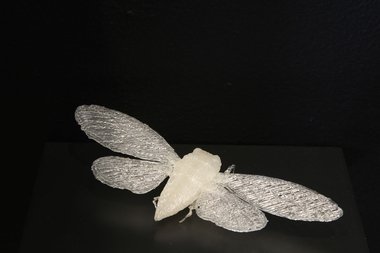
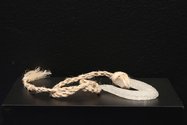




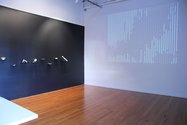

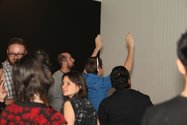
 Two Rooms presents a program of residencies and projects
Two Rooms presents a program of residencies and projects Advertising in this column
Advertising in this column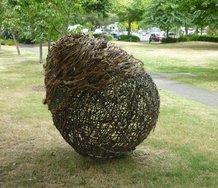
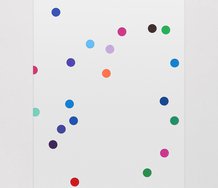
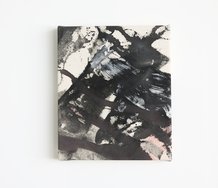
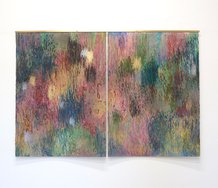
This Discussion has 2 comments.
Comment
Melinda Sheryl, 3:29 p.m. 10 May, 2012 #
The title “Glancing at the History of Digital Art” is interesting. Historically one is supposed to add something new to the dialogue of art (the history of art). Doing 10 year old experiments will be seen in the same light in the same way that science will look askance at someone naively repeating well-trodden territory and yesterday’s experiments. History is full of many intriguing exhibitions using cutting edge digital technology for two decades. Digital 3D printing like Bronwyn Holloway-Smith’s has been thoroughly explored by many artists from Karin Sander (http://www.karinsander.de/index.php?id=e5) to New Zealand’s own James Charlton, Marcus Williams, Susan Jowsey, Brit Bunkley and others who have been curating and exhibiting similar 3D digital for well over a dozen years. That said, Douglas Bagnall’s work continues to be conceptually gripping.
Luke Munn, 11:56 p.m. 29 May, 2012 #
It's true that 3D printing has been explored by a variety of artists, but while the technique undergoes only slight refinements, each artist has used it for a wide range of thematic and conceptual concerns.
Karin Sander's piece, as you mentioned, really utilised the machine aspect of 3D printing, setting up a type of egalitarian, high speed factory where any(body) could become a sculpture by having themselves scanned, and the role of the artist was largely negated in the actual sculpting process.
Holloway-Smith's project, seems to me to play much more on the notion of authenticity and the archive, creating 'relics' from scratch and allowing others to recreate them perfectly by publishing the models as CC licensed. The usual 'ghostly' finish of 3D works also lends nicely to the threads of memory and history brought up here, and that's kinda the point - the execution is a technique or medium that bends and flexes with the concept.
Participate
Register to Participate.
Sign in
Sign in to an existing account.